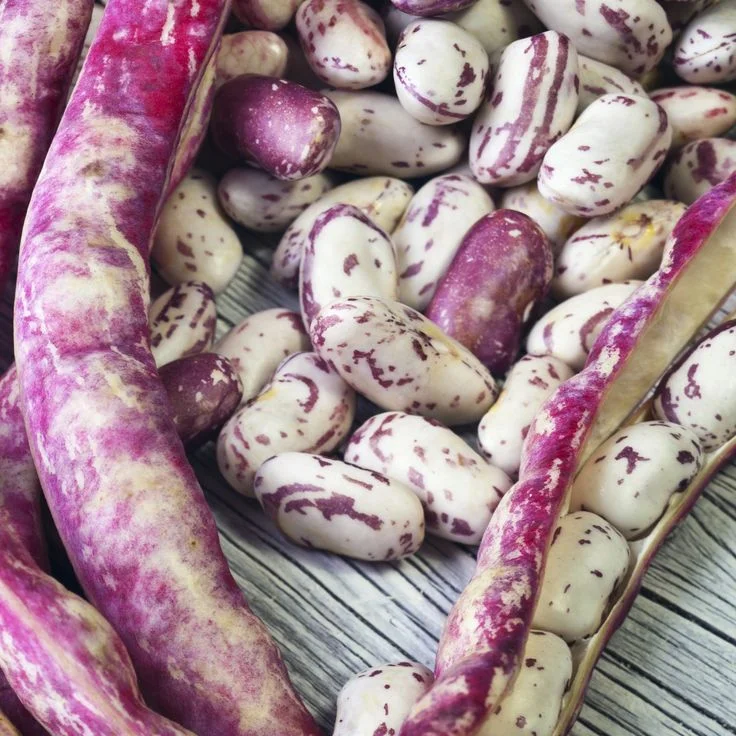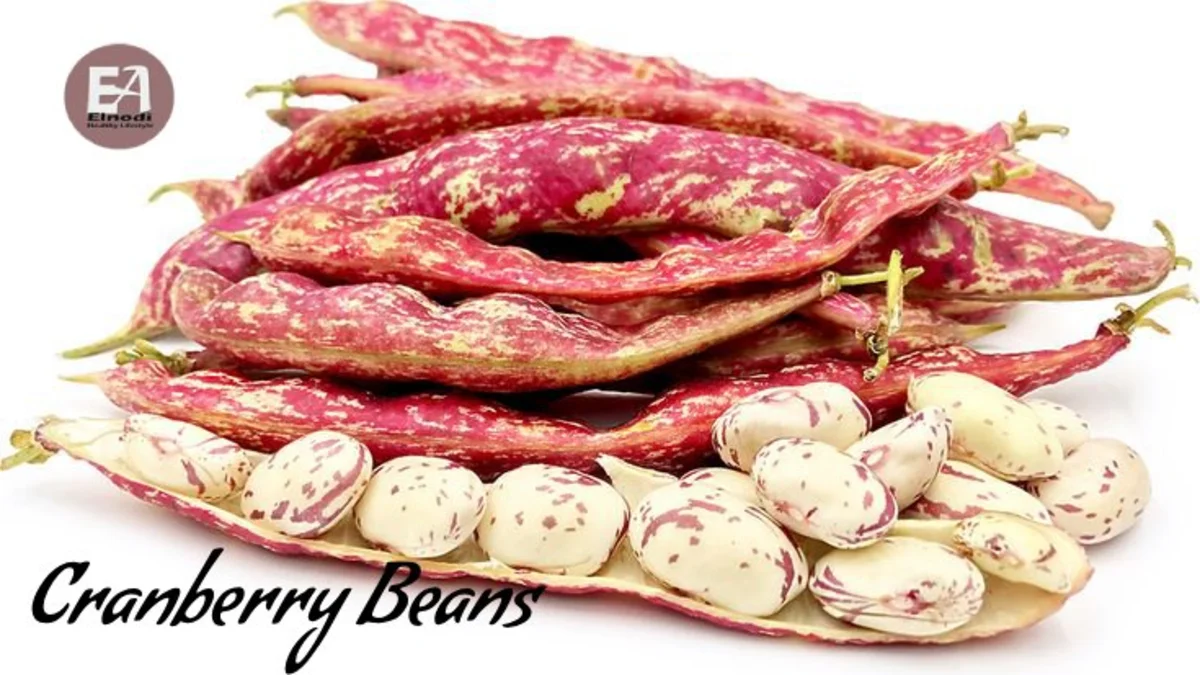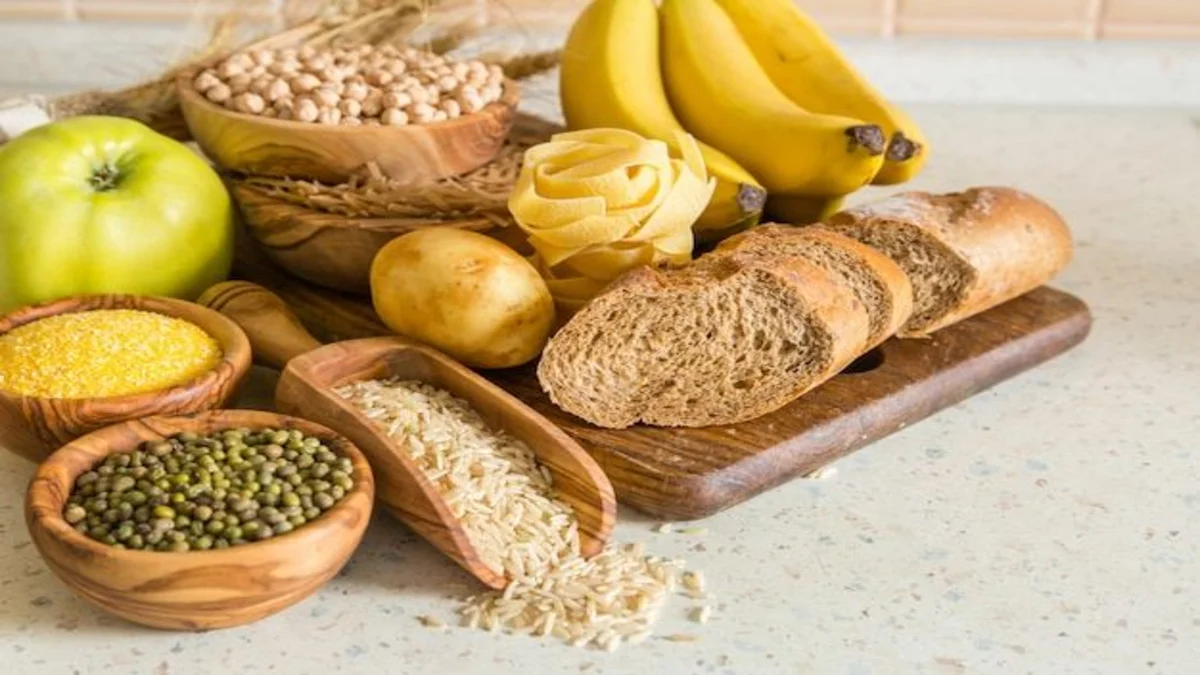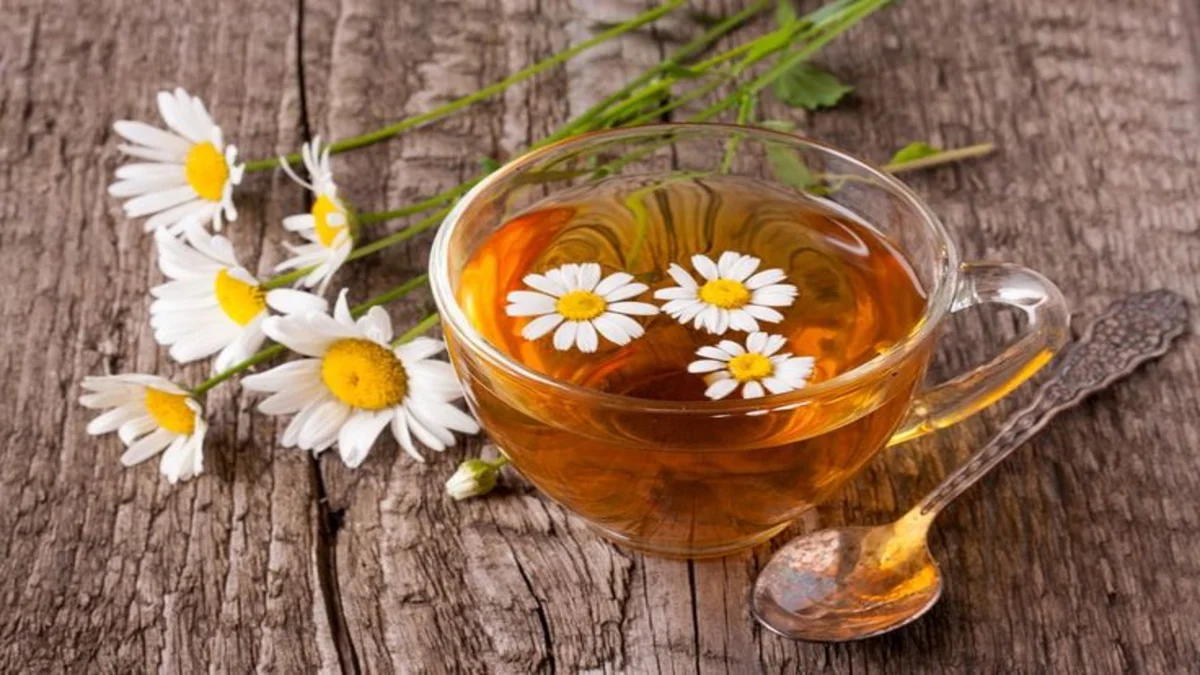Are you looking for a new superfood to add to your diet? Look no further than cranberry beans! These little legumes may not be as popular as other superfoods, but they are worth trying.
What are Cranberry Beans?
Cranberry beans, also known as borlotti beans or Roman beans, are a variety of beans with a speckled red-and-white hue similar to cranberries, hence the name. These beans are widely used in Italian, Portuguese, and Turkish cuisines, among others.
Cranberry beans have a moderate, nutty flavor and a creamy texture when cooked. They’re commonly used in soups, stews, salads, and pasta meals. They, like other beans, are high in protein, fiber, and a variety of minerals like folate, iron, and potassium.
Cranberry beans are frequently used in Italian cuisine, including pasta e fagioli (pasta and bean soup), salads, and simply cooked with olive oil and herbs. They can also be dried for long-term storage or used fresh during the season.
Cranberry Beans’ nutrition profile

| Nutrient | Amount |
|---|---|
| Calories | 139 kcal |
| Protein | 8.86 g |
| Carbohydrates | 25.27 g |
| Fiber | 7.4 g |
| Fat | 0.65 g |
| Calcium | 29 mg |
| Iron | 2.48 mg |
| Magnesium | 57 mg |
| Phosphorus | 178 mg |
| Potassium | 435 mg |
| Sodium | 2 mg |
| Zinc | 1.19 mg |
| Vitamin C | 0 mg |
| Thiamine (B1) | 0.207 mg |
| Riboflavin (B2) | 0.062 mg |
| Niacin (B3) | 0.690 mg |
| Vitamin B6 | 0.207 mg |
| Folate (B9) | 309 µg |
| Vitamin A | 0 IU |
| Vitamin E | 0.03 mg |
| Vitamin K | 3.5 µg |
Please keep in mind that these figures are approximations and may vary depending on growing circumstances and preparation procedures. For more precise information, always consult specific packaging or nutritional databases.
Benefits of Cranberry Beans
Cranberry beans, also known as borlotti beans, provide several health benefits due to their nutritional value and potential health-promoting characteristics. Here are some of the benefits associated with eating cranberry beans:
Rich in Protein
Cranberry beans are a good source of plant-based protein, making them an excellent choice for vegetarians and vegans seeking to meet their protein requirements.
High in Fiber
These beans are high in dietary fiber, which promotes digestive health by reducing constipation, encouraging regular bowel movements, and helping to maintain a healthy gut microbiome.
Heart health

Cranberry beans contain fiber, which can help lower cholesterol levels and reduce the risk of heart disease. They also include potassium, which helps regulate blood pressure and improves cardiovascular health.
Blood Sugar Regulation
Cranberry beans contain fiber and protein, which can help stabilize blood sugar levels, making them an excellent choice for diabetics or anyone wanting to regulate their blood sugar levels.
Nutrient-dense
Cranberry beans contain critical elements such as iron, magnesium, phosphorus, and folate, which are required for many body activities such as energy production, bone health, and DNA synthesis.
Antioxidant Properties
Cranberry beans include antioxidants such as flavonoids and phenolic substances, which help protect cells from oxidative damage produced by free radicals. This could help lower the risk of chronic diseases including cancer and heart disease.
Weight Management

Cranberry beans, with their high fiber and protein content, can help enhance satiety and lower overall calorie consumption, potentially aiding in weight control and weight loss attempts.
Beneficial to Pregnant Women
Cranberry beans include a high folate content of 100g, delivering 147% of the recommended daily dose of this vitamin. Furthermore, research reveals that these vitamins are required for the fetus to produce DNA, RNA, blood cells, and particular amino acids. Pregnant women should eat these beans to avoid folic acid deficiency, which can result in birth defects.
Versatile and easy to incorporate into the diet
Cranberry beans can be used in a variety of meals, including soups, stews, salads, and side dishes, making them an adaptable complement to any healthy diet.
Overall, including cranberry beans in your diet can improve your health and well-being by delivering critical nutrients and potentially lowering your risk of numerous chronic diseases.
How to cook Cranberry beans?
Cranberry beans are easy to cook and can be prepared in a variety of ways. Here’s a basic guide for cooking cranberry beans:
- Sorting and Rinsing: Start by sorting through the cranberry beans to remove any debris or damaged beans. Then rinse them thoroughly under cold water to remove any dirt or dust.
- Soaking (Optional): While not necessary, soaking cranberry beans overnight can help reduce cooking time and improve digestibility. To soak the beans, place them in a large bowl and cover with water, ensuring the water level is at least a couple of inches above the beans. Let them soak for 8-12 hours or overnight.
- Draining and Rinsing: After soaking, drain the beans and rinse them again under cold water.
- Cooking on the Stovetop:
- Place the drained and rinsed beans in a large pot and cover them with fresh water. The water level should be about 2 inches above the beans.
- Bring the water to a boil over high heat, then reduce the heat to low and let the beans simmer, partially covered, for about 60-90 minutes or until they are tender. Stir occasionally and add more water if needed to keep the beans submerged.
- Pressure Cooking (Optional): Alternatively, you can cook cranberry beans in a pressure cooker for faster results. Follow the manufacturer’s instructions for cooking beans in your specific pressure cooker model.
- Seasoning (Optional): Once the beans are cooked to your desired tenderness, you can season them with salt, herbs, spices, or other flavorings according to your preference. Avoid adding salt or acidic ingredients (like tomatoes) to the cooking water, as they can toughen the beans.
- Enjoying: Serve the cooked cranberry beans hot as a side dish, add them to soups, stews, and salads, or use them as a base for various bean-based recipes.
Remember that cooking periods might vary depending on the age and size of the beans, as well as the method employed. To avoid intestinal pain, ensure that the beans are properly cooked.
Where to Buy and How to Choose Cranberry Beans?
Ideally, beans should be utilized within a year of harvest. If you buy packaged beans, carefully check the food label that includes the packaging date. Try to get beans from a store with a high turnover so you have a better chance of getting fresh ones.
When purchasing beans, pay attention to their appearance. They should be equal in size, shape, and color. Make sure the beans aren’t split or wrinkled. Check that they have not been damaged by insects, i.e. there are no tiny holes on their surfaces.
How to Store the Beans?
Cranberry beans should be kept cool and dry in an airtight container. Try to utilize them within 6 months, as old beans take longer to cook and lose some of their usefulness. Cooked beans can be refrigerated for up to 5 days in a tightly sealed glass, porcelain, or stainless steel container. Cooked beans can also be frozen and stored for up to six months.
Cranberry Beans Recipes
1. Cranberry Bean Soup
Ingredients:
- 1 cup dried cranberry beans, soaked overnight and drained
- 4 cups vegetable or chicken broth
- 1 onion, chopped
- 2 cloves garlic, minced
- 2 carrots, diced
- 2 celery stalks, diced
- 1 bay leaf
- 1 teaspoon dried thyme
- Salt and pepper to taste
- 2 tablespoons olive oil
- Fresh parsley for garnish (optional)
Instructions:
- Heat olive oil in a large pot over medium heat. Add chopped onion, minced garlic, diced carrots, and diced celery. Cook until vegetables are softened, about 5-7 minutes.
- Add soaked and drained cranberry beans to the pot along with bay leaf and dried thyme. Stir to combine.
- Pour in vegetable or chicken broth, ensuring that the beans are fully covered. Bring the mixture to a boil, then reduce heat to low and simmer for 1-1.5 hours or until beans are tender.
- Season the soup with salt and pepper to taste. Remove the bay leaf before serving.
- Ladle the soup into bowls and garnish with fresh parsley if desired. Serve hot and enjoy!
2. Cranberry Bean Salad
Ingredients:
- 2 cups cooked cranberry beans (you can use canned beans, drained and rinsed)
- 1 red bell pepper, diced
- 1 yellow bell pepper, diced
- 1/2 red onion, finely chopped
- 1/4 cup chopped fresh cilantro or parsley
- 2 tablespoons olive oil
- 2 tablespoons balsamic vinegar
- 1 tablespoon lemon juice
- Salt and pepper to taste
Instructions:
- In a large bowl, combine cooked cranberry beans, diced red bell pepper, diced yellow bell pepper, finely chopped red onion, and chopped fresh cilantro or parsley.
- In a small bowl, whisk together olive oil, balsamic vinegar, lemon juice, salt, and pepper to make the dressing.
- Pour the dressing over the bean mixture and toss until well combined.
- Let the salad marinate in the refrigerator for at least 30 minutes to allow the flavors to meld together.
- Serve the cranberry bean salad as a side dish or as a light and nutritious main course. Enjoy!
Side Effects of Cranberry Beans
- Cranberries are GRAS (generally regarded as safe), however excessive eating might induce stomach distress and diarrhea in young children.
- Cranberry-concentrated extracts have a high oxalate content. When ingested in excess, oxalates increase the risk of developing kidney stones. People with a history of kidney stones should limit their use of cranberries and related products.
Others
Cranberry beans Vs. kidney beans
Cranberry Beans:
- Appearance: Cranberry beans are medium-sized beans with a cream-colored background and reddish speckles, resembling cranberries. They have a mottled appearance.
- Taste: Cranberry beans have a mild, nutty flavor with a creamy texture when cooked. They are often described as slightly sweet and earthy.
- Nutritional Composition: Cranberry beans are rich in protein, dietary fiber, and various essential nutrients such as iron, magnesium, potassium, and folate. They also contain antioxidants and are relatively low in fat.
Kidney Beans:
- Appearance: Kidney beans are larger than cranberry beans and have a distinct kidney shape with a smooth texture. They are typically deep red or dark brown.
- Taste: Kidney beans have a robust flavor and a dense, meaty texture. They are commonly used in chili, soups, and stews for their hearty taste.
- Nutritional Composition: Kidney beans are also rich in protein and dietary fiber, along with essential nutrients such as iron, magnesium, potassium, and folate. They contain antioxidants and are low in fat, similar to cranberry beans.
Differences:
- Appearance: The most obvious difference between cranberry beans and kidney beans is their appearance. Cranberry beans have a mottled, speckled appearance, while kidney beans are solid in color and kidney-shaped.
- Taste and Texture: Cranberry beans have a milder flavor and creamier texture compared to the denser, meatier taste of kidney beans.
- Usage: While both beans can be used interchangeably in many recipes, they each have their unique flavor profiles that may complement different dishes. Kidney beans are commonly used in chili, bean salads, and Mexican dishes, while cranberry beans are often used in soups, stews, and salads.
What are the benefits of Cranberry beans for babies?
Cranberry beans can provide numerous nutritional benefits to babies when included in a well-balanced and age-appropriate diet. These beans are high in key nutrients like protein, dietary fiber, iron, magnesium, potassium, and folate, which are required for proper growth and development during infancy.
Cranberry beans’ protein content improves muscle and tissue growth, while dietary fiber facilitates digestion and encourages regular bowel movements, which helps to reduce constipation in infants. Furthermore, the iron included in cranberry beans is essential for the formation of hemoglobin, which transports oxygen to cells throughout the body, boosting overall vitality and cognitive development.
Cranberry beans’ magnesium and potassium concentration promotes bone health while also regulating blood pressure and fluid balance in newborns.
When cranberry beans are added to a baby’s diet, they can give important nutrients while also improving their general health and well-being. Before introducing cranberry beans or any other new food to a baby’s diet, keep an eye out for any signs of allergies or digestive distress and contact with a pediatrician.
What Alternative Beans to Cranberry Beans?
Kidney Beans: Large and kidney-shaped, kidney beans have a meaty texture and a strong flavor. They are frequently used in Mexican cuisine, bean salads, and chili.
Black Beans: Black beans have a smooth, creamy texture and a moderate, somewhat sweet flavor. They are frequently used in rice dishes, stews, soups, and Latin American cooking.
Pinto Beans: Medium-sized pinto beans have a creamy texture and a pinkish-brown tint. They are frequently used in Mexican and Southwestern dishes, including burritos, bean dips, and refried beans, because of their mild flavor.
Cannellini Beans: Large, creamy white beans with a little nutty flavor are cannellini beans, sometimes referred to as white kidney beans. They go well with soups, salads, pasta dishes, and dips because of their versatility.
Black-eyed Peas: Small, cream-colored beans with a noticeable black patch on one side are known as black-eyed peas. They are frequently used in African and Southern dishes, such as bean salads and Hoppin’ John, because of their firm structure and mildly earthy flavor.
Chickpeas (Garbanzo Beans): Round, beige-colored beans with a firm texture and nutty flavor are called chickpeas. They are frequently used in Indian, Middle Eastern, and Mediterranean dishes such as curries, stews, and salads.
Lentils: Lentils are legumes with comparable nutritional value, even though they are not considered to be beans. They offer a broad variety of flavors and textures, and they are available in a variety of hues, such as green, brown, red, and black. Because of their versatility, lentils can be added to salads, soups, stews, and side dishes.
Summary
Cranberry beans are visually appealing, nutrient-dense, and have a wide range of culinary applications. You can make the most of these adaptable and delicious beans by experimenting with different cooking techniques, ingredient substitutions, and recipe ideas.
FAQs
what do cranberry beans taste like?
how do cook dried cranberry beans?
After the beans have soaked, transfer them to a pot and add new water or broth, being sure to use roughly three cups of liquid for every cup of dried beans. After bringing the water to a boil, cover the pot and lower the heat to a simmer. Simmer the beans for 60 to 90 minutes, or until they are soft but not falling apart. Salt should be added toward the very end of cooking to avoid toughening the beans. After cooking, remove any leftover liquid and use the cranberry beans in your preferred salad dressings, soups, stews, and side dishes.
Are cranberry beans keto?
Can cranberry beans be eaten raw?
What’s the difference between a pinto bean and a cranberry bean?
Disclaimer: The information provided here is for educational/awareness purposes only and is not intended to be a substitute for medical treatment by a healthcare professional and should not be relied upon to diagnose or treat any medical condition. The reader should consult a registered medical practitioner to determine the appropriateness of the information before consuming any medication. PharmEasy does not provide any guarantee or warranty (express or implied) regarding the accuracy, adequacy, completeness, legality, reliability, or usefulness of the information; and disclaims any liability arising thereof.
References
- https://fdc.nal.usda.gov/fdc-app.html#/food-details/173736/nutrients
- https://www.ncbi.nlm.nih.gov/pmc/articles/PMC3690345/ benefits
- https://www.ncbi.nlm.nih.gov/pmc/articles/PMC3257631/ benefits
- https://www.ncbi.nlm.nih.gov/pmc/articles/PMC3544045/ benefits
- https://pubmed.ncbi.nlm.nih.gov/32142510/ benefits
- https://www.ncbi.nlm.nih.gov/pmc/articles/PMC3519088/ benefits
- https://pubmed.ncbi.nlm.nih.gov/26878790/ side effects





